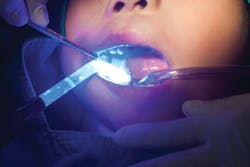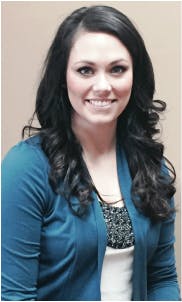Ask the Experts: What are your go-to sealants?
Properly applied sealants are a cornerstone of dental hygiene prevention, especially for young patients—but they’re not just for kids. We recently asked our editorial advisory board how they would handle sealant application in two very different patient situations. If you’ve got patients who love gummy worms and patients who love coffee (and we know you do), read on!
Patient A
This 7-year-old patient is at high risk for caries due to his diet, which includes sugary drinks and sticky foods, and his oral hygiene habits; he brushes just once a day and flosses only occasionally. He has normal dexterity for oral hygiene for his age, and while he seems mildly interested in home-care instruction, his parents are not particularly interested in enforcing good habits at home.
Patient B
This 42-year-old patient has excellent oral hygiene awareness and habits but is suffering decay issues. She has medication-
induced xerostomia. She enjoys a few cups of sweetened coffee spread throughout the day, which she drinks slowly. She is frustrated by the current state of her oral health and is interested in additional preventive measures.
Amber Metro-Sanchez, BA, RDH
What is your sealant of choice for these patients, and why?
For the younger patient, I would use UltraSeal XT hydro by Ultradent. This sealant material works well in a moist environment, which thankfully reduces the constant need for saliva control in this age group. This product also releases fluoride after placement and has excellent wear resistance, so it is a winner for this patient all around.
For the older patient, I would use BioCoat by Premier. This material contains microcapsules that are filled with fluoride, calcium, and phosphate. In a patient with dry mouth, the extended release of these minerals would aid in the remineralization of any early lesions and help prevent damage from daily acid exposure. Additionally, this material flows well into tiny, deep grooves, helping to prevent microleakage, and as a result, keeps the margins super smooth.
Any special considerations for application?
With the 7-year-old, I would use the Ivory ReLeaf by Kulzer for gentle hands-free suctioning. Most children tolerate this small leaf-shaped device very well, as it is comfortable when placed on the inside of the cheek.
For both patients, I would clean the tooth surface with a Butler Proficiency disposable prophy angle before applying the sealant material. This product does not use any polish, so it helps speed up the process.
Are there contraindications or special considerations for these patients?
In the dry mouth patient, I would make sure to wet her mouth before starting the procedure to aid in her comfort. With both patients, I would explain that the sealants are a great tool in preventing future decay, but that they are not a cure-all. Dietary issues, especially pertaining to sugar exposure, would need to be further addressed with each patient.
Kristin Goodfellow, RDH
What is your sealant of choice for these patients, and why?
“Great hygiene” is not a term that is commonly used when talking about young dental patients. Therefore, placing quality dental sealants can provide a huge benefit. My choice in sealant material is UltraSeal XT hydro by Ultradent. This product has a high retention rate and releases fluoride to help promote healthy enamel. Since this patient is high caries risk, has poor oral hygiene, and parents who aren’t helping, fluoride release will benefit him long term.1
Sealants greatly benefit adult patients, too. My choice for the second patient is UltraSeal XT plus by Ultradent. It is easy to apply with excellent retention. Since many times adult sealants aren’t covered by insurance, I want to give my patients something that will last as long as possible. I want my product of choice to provide the most benefits, but not take a lot of time to apply.2 UltraSeal XT plus is 58% resin based, making it thicker than most sealants, therefore stronger and more resistant to wear. Even with its increased strength, the viscosity is low, making it easier to place. It also has esthetic choices in shades.
Any special considerations for application?
Don’t place a sealant unless you know you can place it well. Kids can sometimes pose a special challenge due to compliance and moisture issues. I’d recommend using PrimaDry by Ultradent with UltraSeal XT hydro. It enhances the penetration into pits and fissures by eliminating moisture, the primary cause of sealant failure.
Before curing, I normally like to use a microbrush when placing a sealant to help push the material into the deep crevices. The tip included with UltraSeal XT plus has a brush attached, so it saves me a step.
Are there contraindications or special considerations for these patients?
As we know, sealants can protect the deep pits and fissures in the teeth, but the interproximal spaces are still vulnerable to decay. Everyday care is really what will make the difference for the pediatric patient. I would recommend continual use of a fluoride toothpaste and talking to mom and dad about diet and helping him brush and floss until he is at least eight years old.
Many adult patients sip on coffee to help make it through the day. In this case, this is likely a large contributing factor in the adult patient’s battle against cavities. As an additional recommendation, I would educate this patient on the cariostatic effects of xylitol and suggest that she use a xylitol-containing product directly after consuming any beverage other than water.
Amber Auger, MPH, RDH
What is your sealant of choice for these patients, and why?
For the pediatric patient, I would choose to use Embrace Wetbond by Pulpdent because it easily adheres to the teeth. The product’s ability to adhere to the tooth even in a wet environment ensures the sealant is placed without compromising its longevity. While working in a pediatric office, I found the Wetbond was the most reliable product and easiest to use on even the most active children.
When reevaluating the patients who have had sealants, I find Embrace Wetbond has the most even margins and long-term durability. The glass ionomer sealant continues to charge each time the patient brushes with fluoride.
When it comes to high-risk (decay within the last 6months) or moderate-risk (decay within the last 7 to 23 months) adult patients, sealants should be considered as an adjunctive therapy. Each time patients come in, we need to assess their habits from a diet standpoint and from a systemic standpoint to determine their overall risk of tooth decay. These risks can change at each visit, but it’s important to educate patients to ensure that they understand how to limit their risk of tooth decay. By placing sealants on adults with deep grooves who have a history of carious lesions on their occlusal surfaces, we preserve the enamel.
Any special considerations for application?
Due to its hydrophilic nature, Embrace Wetbond is unique in its ability to adhere to the tooth in a moist environment. It is important to check curing lights to determine if the increase of power will need to decrease the curing time.
Are there contraindications or special considerations for this case?
When placing sealants on any patient, especially a pediatric patient, it is important to ensure that the sealant margins are sound and the material is one that works with the natural components of the tooth.
Staci Violante, MSDH, RDH
What is your sealant of choice for these patients, and why?
The effectiveness of sealing materials caries prevention has been demonstrated through the years. The proper use of these materials and the respect of each clinical step in their application is the basis of this effectiveness.
My dental sealant of choice for the pediatric patient is the Kidz Seal-America system by Taub Dental Products because of its dependability, strength, and retention. I find this sealant system extremely accessible and easy to place, especially on children, as it can be used in a wet or dry field without concern. This sealant mixture does not allow for microleakage, which is important in a sealant system to prevent possible decay from forming underneath and harming the virgin tooth.
Kidz Seal-America is a self-adjusting system, so no occlusal adjustment is necessary. I have volunteered for many public-health and school-based sealant programs, and to use a material with all of these great qualities has been wonderful. The focus can be on the children and not on the worry of what could possibly happen after they’re placed.
For the adult patient, my sealant of choice is BioCoat from Premier. BioCoat is a great choice for patients who are more susceptible to decay or have high caries risk assessments. This system applies just as a flowable does, thereby reducing the chipping and wear around the sealant. The system also has SmartCap technology, meaning there are microscopic capsules that are within the sealant itself that absorb and release fluoride. Anytime the patient chews or bites down, the fluoride is released, which makes this system one of my favorites.
Any special considerations for application?
As with other sealant products, use an etch and light cure for polymerization.
References
1. UltraSeal XT hydro. Ultradent website. https://www.ultradent.com/en-us/Dental-Products-Supplies/Prevent-Hygiene/Pit-and-Fissure-Sealants/UltraSeal-XT-hydro-hydrophilic-sealant/Pages/default.aspx?s_cid=2613.
2. Carson SJ, Freeman R. Training and fairer payments would increase caries prevention in practice. Evid Based Dent. 2015;16(1):6-7.
Tips for sealant success
Being organized leads to success, productivity, and time managed well. Having a well-organized tray and a fully charged curing light within reach is a good starting point. Here are some items to have accessible on the tray table: mouth mirror, explorer, scaler, floss, etchant, sealant material, drying material (if preferred), cotton rolls, cotton roll holder, bite blocks, triangles, articulating paper (if needed), polishing burs, and post-treatment patient education forms for the patient and/or guardian.
Many times, the dental hygienist is responsible for ordering sealant products. With so many choices in product catalogs, how do you know which one is right for your patients? Since there are so many different product lines, it is impractical to research them all. Where do you begin? Attending your state or national dental hygiene annual session or walking through the RDH Under One Roof exhibit hall is one way to gain access to the latest products and to receive samples.—Staci Violante, MSDH, RDH






